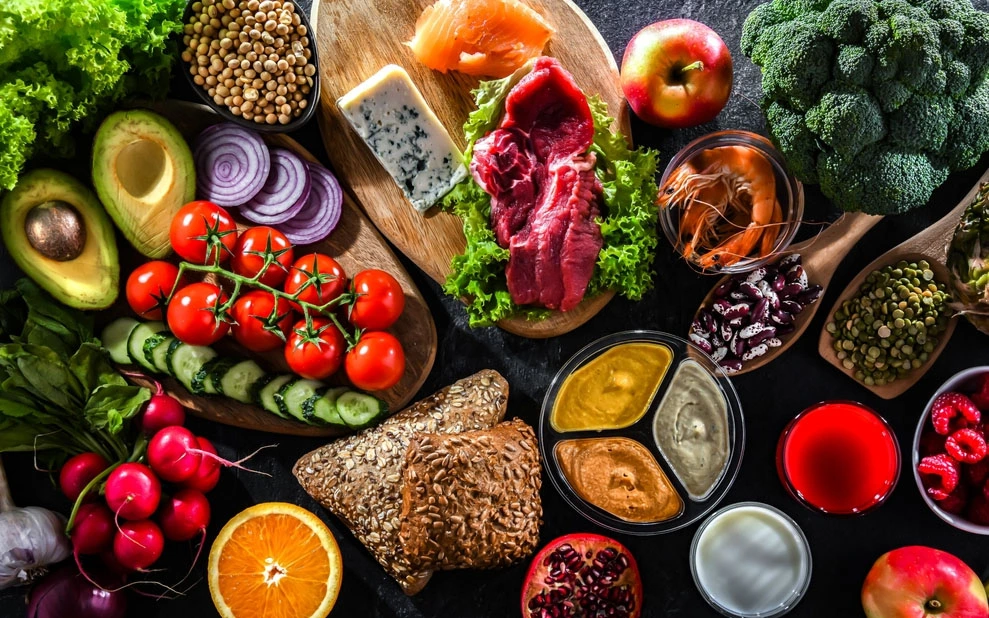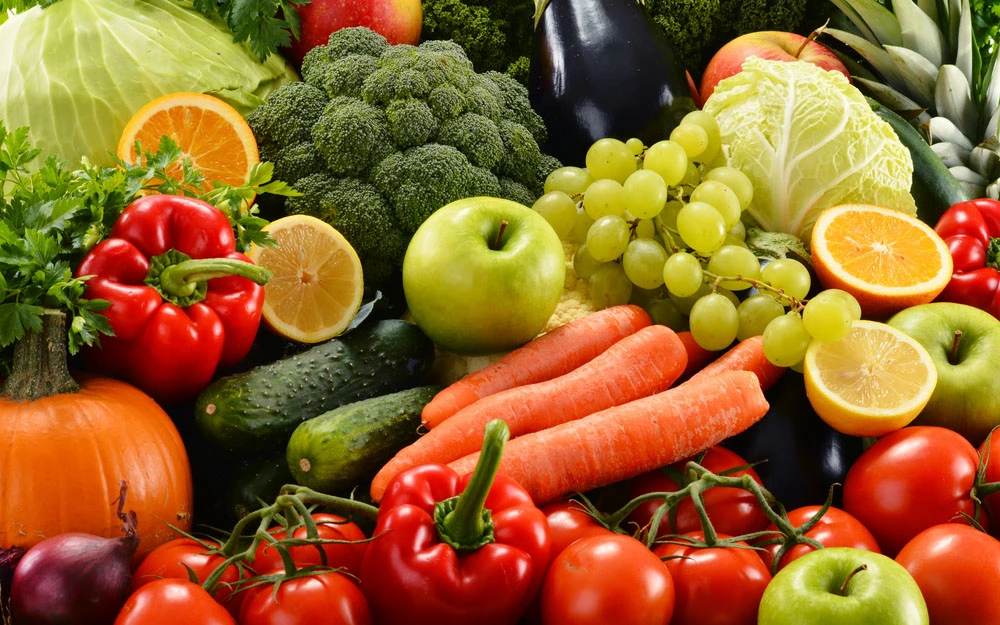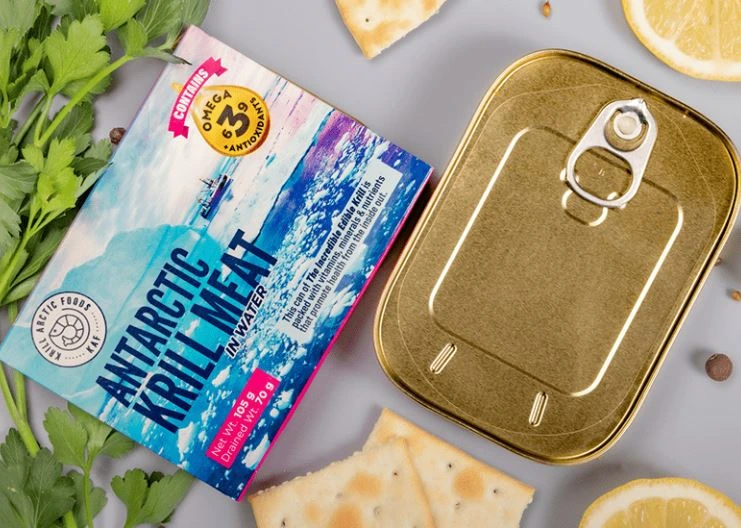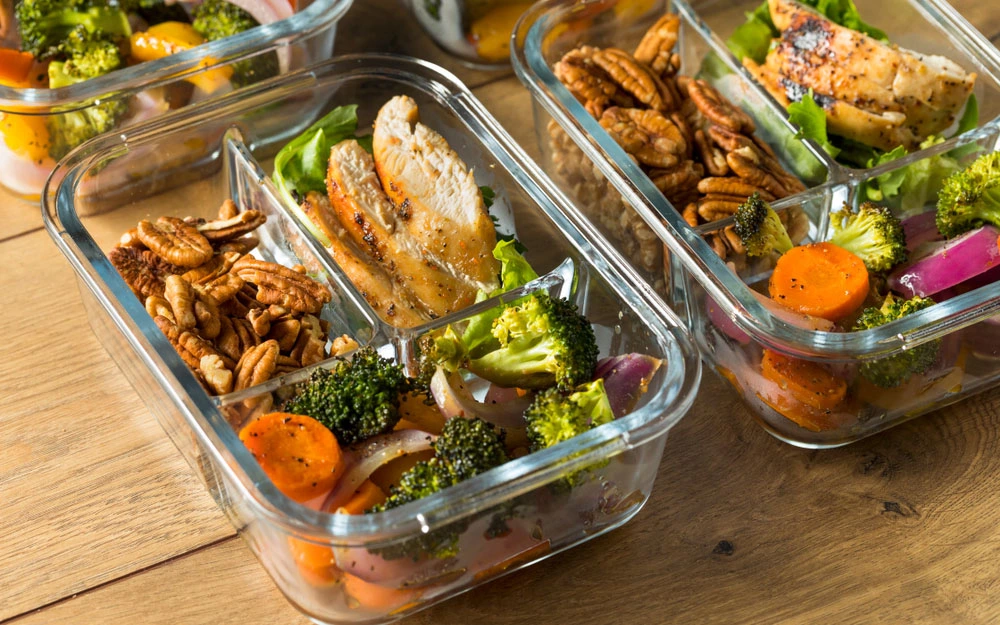- Home /
- Low Potassium Diet: Essential Tips and Delicious Recipes

Posted On:April 8th, 2024
Low Potassium Diet: Essential Tips and Delicious Recipes
Successfully following a low-potassium diet requires meticulous planning and knowledge of food content. It’s not just about cutting out high-potassium foods; it’s learning to balance intake with tasty, nutritious alternatives. Seamlessly integrating these limitations into your daily life may seem daunting at first. However, you might be surprised by how varied and delicious a low-potassium diet can be. Such dietary guidance often starts with a healthcare professional who can provide personalized insights.
A low-potassium diet restricts high-potassium foods such as bananas, oranges, spinach, and potatoes and emphasizes low-potassium options such as apples, berries, and certain vegetables. Always consult a healthcare professional or nutritionist for personalized guidance on following a low-potassium diet.
Following a Low Potassium Diet: Essential Steps
As you embark on the journey of following a low-potassium diet, seeking professional guidance is crucial. Consult with a healthcare professional a registered dietitian or a nutritionist before significantly changing your dietary habits. They can provide personalized advice based on your nutritional needs, ensuring you’re approaching your low-potassium diet safely and effectively.
Healthcare professionals are your dietary navigators, helping you chart a path tailored to your health needs. Their expertise in crafting custom diet plans will give you the knowledge and tools to make informed decisions about your eating. Guidance from a healthcare professional is so fundamental that it’s equally important to modify eating habits according to their recommendations.
Modify Your Eating Habits
Adjusting your eating habits is pivotal to successfully adhering to a low-potassium diet. You’ll focus on consuming low-potassium foods while limiting or even avoiding high-potassium options. Your healthcare provider will offer specific guidance on foods to include and those to avoid or enjoy in moderation, catering to your unique dietary requirements. This isn’t just about making random meal choices—it’s about creating a new culinary lifestyle! Embracing this change opens up a world of exploration into new flavors, recipes, and ingredients you might not have considered before.
Adjusting your eating habits means you’re actively taking charge of your health and well-being. This isn’t just about following rules; it’s about empowering yourself with knowledge to make informed decisions about what you put on your plate.
Regularly Monitor Potassium Levels
Monitoring potassium levels is an essential aspect of managing a low-potassium diet. Regularly checking your blood’s potassium levels can ensure they remain within a healthy range. This monitoring process often requires medical supervision and laboratory tests to gauge your potassium levels accurately.
- Regular monitoring provides invaluable insight into how well your body responds to the dietary changes made under healthcare professionals’ guidance.
- It’s like having checkpoints along the road you can assess progress and make course adjustments if needed.
- By consistently monitoring your potassium levels, you can take proactive steps to maintain balance in your body’s nutritional ecosystem. It’s all about fine-tuning and optimizing for optimal health.
Inclusion List: Low Potassium Foods
When it comes to following a low-potassium diet, it’s all about consuming foods with lower potassium levels while still providing essential nutrients. Let’s explore some examples of low-potassium fruits and vegetables that can be included in your diet for a balanced and wholesome approach.
Vegetables and Fruits
For fruits, consider including apples, berries, grapes, and pineapples. These delicious fruits are low in potassium, making them suitable for a low-potassium diet.
- Apples are versatile and can be enjoyed fresh or used in various recipes.
- Berries, such as strawberries, blueberries, raspberries, and blackberries, offer a burst of flavor and can be added to cereals or consumed as snacks.
- Grapes and pineapples bring their unique sweetness to the table while being low in potassium, making them great snack options.
As for vegetables, cabbage, carrots, and onions are excellent choices.
- Cabbage can be shredded for use in salads or cooked as part of a stir-fry.
- Carrots are versatile, whether eaten raw as a crunchy snack or cooked in soups and stews.
- Onions add flavor to dishes and can be used in various culinary preparations.
These foods add variety to your diet and contribute valuable nutrients without excessively raising potassium levels.
Protein Sources
Regarding protein sources, it’s important to find options that are both nutritious and low in potassium. Incorporating eggs, chicken, and fish into your meals can provide the essential protein your body needs while adhering to a low-potassium diet.
- Consider creating a tasty omelet with eggs and vegetables for breakfast, grilling or roasting chicken with flavorful herbs and spices for dinner, or enjoying a serving of baked or grilled fish as part of a balanced meal plan. These protein sources offer versatility in cooking methods and can be paired with a wide range of low-potassium ingredients to create flavorful dishes.
- Krill, which is naturally low in potassium, is an excellent addition to a low-potassium diet. Krill offers an abundant source of high-quality protein and a rich source of omega-3 fatty acids. With its minimal impact on potassium levels, krill can be an excellent addition to the diet of individuals managing their potassium intake.
Incorporating these low-potassium foods provides variety in your meals and ensures that you’re receiving essential nutrients while maintaining a balanced approach to managing potassium levels.
Exclusion List: High Potassium Foods to Avoid
When maintaining a low-potassium diet, it is just as critical to be mindful of what to exclude as it is to know what to include. High-potassium fruits and vegetables can significantly impact potassium levels in the body, making it essential to limit their consumption.
Fruits and Vegetables
High-potassium fruits such as bananas, kiwis, oranges, and high-potassium vegetables like spinach, potatoes, and tomatoes should be closely monitored or avoided altogether. For example, did you know a medium-sized banana contains around 422mg of potassium? Similarly, just one cup of cooked spinach contains 839mg of potassium. These numbers may seem small at first sight, but they can quickly add up and lead to an unhealthy potassium intake.
Certain popular vegetables like potatoes and tomatoes are versatile kitchen staples but also belong on the high-potassium offenders list. A medium baked potato packs approximately 610mg of potassium, while a cup of cherry tomatoes carries about 292mg.
Other Food Items
It’s not just fruits and veggies that demand attention; other food items also contain significant amounts of potassium.
- Yogurt, often touted for its health benefits, can contain varying potassium levels per serving, depending on the type and brand.
- Nuts are another food category that frequently sneaks into daily snacks or meal toppings without a second thought—however, they’re high in potassium and should be consumed judiciously.
- The same goes for chocolate; you need to watch out for its sweetness, as it is also fairly rich in potassium.
Awareness of these popular food items’ unsuspecting but significant contribution to the daily potassium intake is crucial for those striving to adhere to a low-potassium diet.
All these seemingly innocent food items have hidden potassium contents that can add up quickly—it’s obvious now why keeping a close eye on these items is essential when managing your potassium intake.
Strategies to Maintain a Flavorful, Balanced Diet
Following a low-potassium diet doesn’t mean compromising on flavor or variety. Exploring new recipes and getting creative with seasonings and ingredients can be an exciting opportunity. Here are some effective strategies to help you maintain a delicious and balanced diet while keeping your potassium intake in check.
Recipe Modification
Recipe modification is key to navigating a low-potassium diet without sacrificing taste. By cleverly swapping out high-potassium ingredients for suitable alternatives, you can ensure that your meals are nutritious and bursting with flavor. Using krill-based products as a low-potassium option can be a game-changer in your culinary journey. Try incorporating krill as a versatile protein source in stir-fries, salads, and pasta dishes. For example, instead of using high-potassium beans or lentils as your protein base, experiment with krill to keep your potassium levels in check while adding a rich seafood flavor to your meals.
Flavorful Seasonings
Flavorful seasonings play a crucial role in enhancing the taste of low-potassium meals. Utilizing various herbs and spices can elevate the overall dining experience without relying on high-potassium additives. Consider incorporating aromatic herbs such as basil, oregano, and cilantro, along with spices like cumin, paprika, and turmeric, to infuse your dishes with depth and complexity. These seasonings not only bring out the ingredients’ natural flavors but also complement the dietary requirements of a low-potassium regimen.
Remember, maintaining a balanced and flavorful diet is about discovering the perfect harmony between healthy ingredients and tantalizing flavors. You can transform your meals into culinary masterpieces by exploring recipe modifications and experimenting with various herbs and spices while prioritizing your dietary needs.
Health Implications of Low Potassium Levels
Potassium is vital for our bodies to work properly. When our potassium levels drop below the recommended range, it can lead to hypokalemia, which can have several health implications.
- One of the first signs of low potassium levels is muscle weakness, which makes simple tasks a real challenge and leaves us feeling more tired than usual.
- As hypokalemia progresses, more severe symptoms such as fatigue and abnormal heart rhythms may emerge.
- Severe hypokalemia can even cause paralysis and life-threatening cardiac arrhythmias. This underlines the importance of maintaining adequate potassium levels for overall health and well-being.
- Do you take frequent breaks when walking because your leg muscles are too weak to keep going, or do you feel lightheaded due to irregular heart rhythms? Such symptoms impact physical abilities and create distressing experiences that undermine one’s quality of life.
- Therefore, managing potassium levels is about preventing discomfort and safeguarding against life-threatening complications. Seeking medical advice and guidance on managing potassium levels is essential, especially for those with underlying health conditions requiring special dietary intake attention.
Balance and Moderation
Maintaining a balance in potassium levels is critical for promoting overall well-being. While avoiding excessive potassium intake is important, ensuring an optimal range through diet and lifestyle choices is crucial.
- When we aim for balance, we strive for an equilibrium supporting bodily functions without overloading or depriving our systems of key nutrients. Potassium plays a significant role in muscle function, nerve signaling, and fluid balance, underscoring the necessity of maintaining moderate levels.
- Too much potassium (hyperkalemia) can lead to adverse effects such as irregular heartbeat, nausea, and weakness, while overly low levels result in muscle weakness and abnormal heart rhythms. Achieving balance ensures that the body’s intricate processes continue to function optimally.
Understanding these health implications sheds light on why balancing potassium levels—neither too high nor too low—is central to supporting overall health and vitality. Achieving this equilibrium involves mindful dietary choices and proactive management under professional guidance.
Practical Tips to Decrease Potassium in Your Diet
Strategic cooking techniques and portion control play crucial roles in managing potassium intake when following a low-potassium diet. Let’s explore some practical tips that can help you easily navigate its complexities.
Cooking Techniques
One effective way to decrease the potassium content in certain high-potassium vegetables is through a process called leaching. This method involves rinsing the peeled vegetables (such as potatoes, sweet potatoes, carrots, beets, and rutabagas) in warm water, cutting them into slices, soaking them in warm water for 2 hours, rinsing again with warm water, and then cooking them with plenty of water. This process helps reduce the potassium levels, making these vegetables more suitable for a low-potassium diet. For instance, if you are craving mashed potatoes but need to lower their potassium content, this leaching technique can be a helpful solution.
Tip: To decrease potassium content further, consider boiling the vegetable in a large volume of water and discarding the water after cooking.
Portion Control
In addition to carefully selecting and preparing low-potassium foods, portion control is equally significant when managing potassium levels. While some high-potassium foods may be permissible in limited quantities, exceeding the recommended serving size can significantly impact your potassium intake.
For example, bananas are known for their high potassium content. However, consuming a small portion—in moderation—can be acceptable for individuals on a low-potassium diet. Understanding the significance of portion control empowers you to include certain high-potassium foods in your meal plan without jeopardizing your overall potassium intake.
By implementing these practical tips and approaches into your daily routine, you can confidently and creatively navigate the challenges of a low-potassium diet. These strategies offer flexibility and empowerment as you make informed choices to support your overall well-being while managing your potassium levels effectively.
For delicious low-potassium recipes and expert tips on maintaining a balanced diet while managing potassium intake, visit Krill Arctic Foods. Start your journey towards healthier eating today.
Related Posts
Shop
Products You May Like
Lorem Ipsum is simply dummy text of the printing and typesetting industry
m Ipsum is simply dummy text of the printing and typesetting industry.









